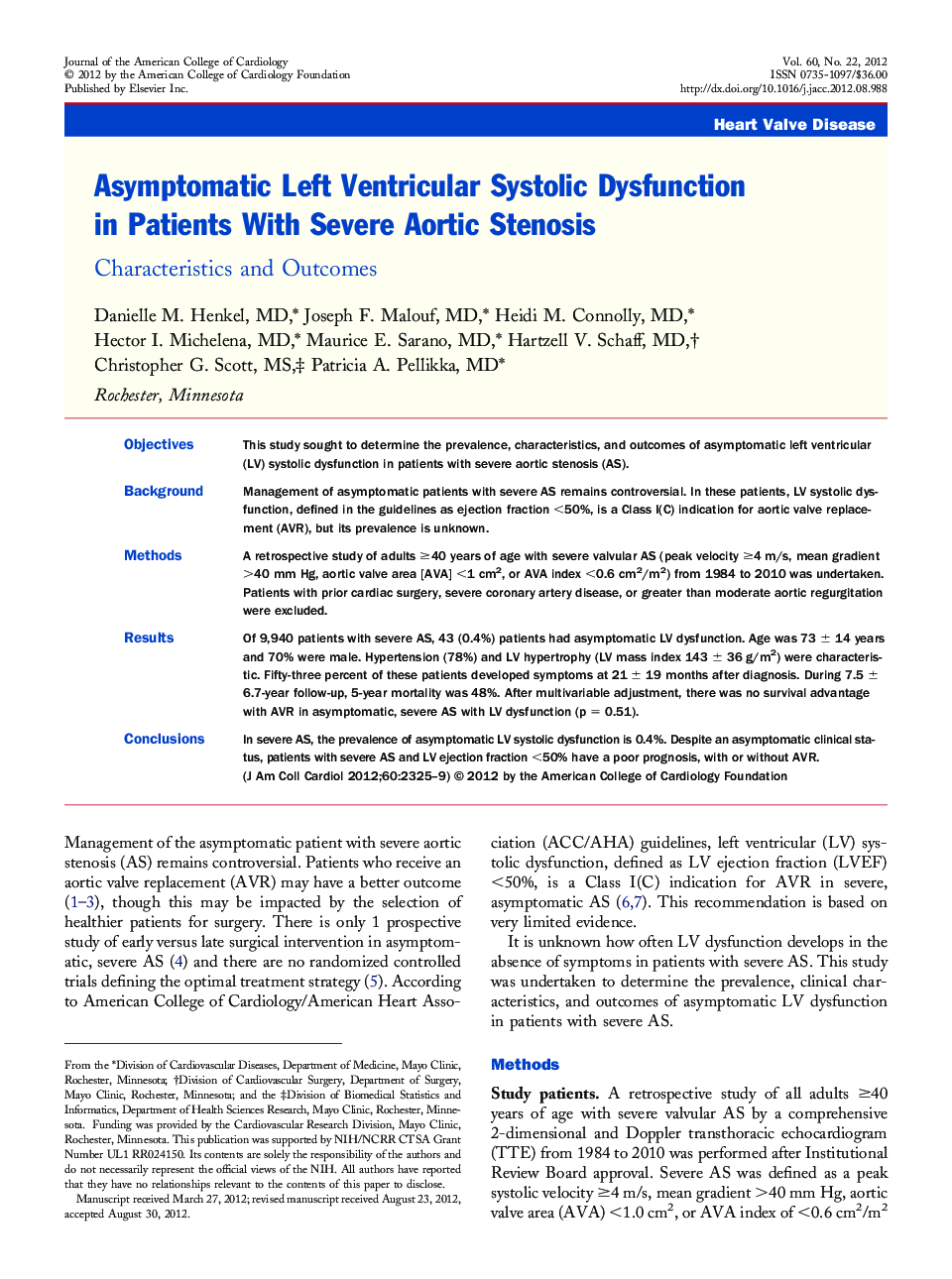| Article ID | Journal | Published Year | Pages | File Type |
|---|---|---|---|---|
| 2946663 | Journal of the American College of Cardiology | 2012 | 5 Pages |
ObjectivesThis study sought to determine the prevalence, characteristics, and outcomes of asymptomatic left ventricular (LV) systolic dysfunction in patients with severe aortic stenosis (AS).BackgroundManagement of asymptomatic patients with severe AS remains controversial. In these patients, LV systolic dysfunction, defined in the guidelines as ejection fraction <50%, is a Class I(C) indication for aortic valve replacement (AVR), but its prevalence is unknown.MethodsA retrospective study of adults ≥40 years of age with severe valvular AS (peak velocity ≥4 m/s, mean gradient >40 mm Hg, aortic valve area [AVA] <1 cm2, or AVA index <0.6 cm2/m2) from 1984 to 2010 was undertaken. Patients with prior cardiac surgery, severe coronary artery disease, or greater than moderate aortic regurgitation were excluded.ResultsOf 9,940 patients with severe AS, 43 (0.4%) patients had asymptomatic LV dysfunction. Age was 73 ± 14 years and 70% were male. Hypertension (78%) and LV hypertrophy (LV mass index 143 ± 36 g/m2) were characteristic. Fifty-three percent of these patients developed symptoms at 21 ± 19 months after diagnosis. During 7.5 ± 6.7-year follow-up, 5-year mortality was 48%. After multivariable adjustment, there was no survival advantage with AVR in asymptomatic, severe AS with LV dysfunction (p = 0.51).ConclusionsIn severe AS, the prevalence of asymptomatic LV systolic dysfunction is 0.4%. Despite an asymptomatic clinical status, patients with severe AS and LV ejection fraction <50% have a poor prognosis, with or without AVR.
